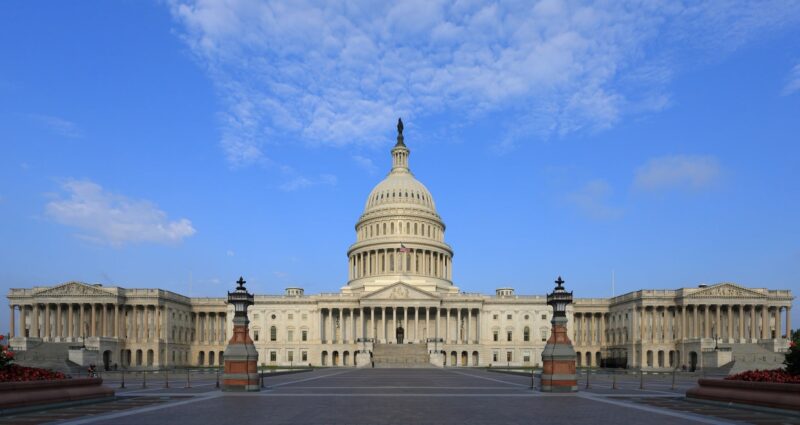
Congress’ rush to pass a spending bill to avert a government shutdown raises questions about National Nuclear Security Administration (NNSA) funding needs – particularly those for infrastructure and operations – that may or may not be met should the agency’s spending levels be frozen at the currently enacted $12.5 billion, in light of its fiscal 2017 request for $12.9 billion.
The Senate is working to move a stopgap spending bill to the floor, which, if passed by midnight Sept. 30, would prevent a federal shutdown. Senate leaders are said to be considering a continuing resolution that would end on Dec. 9, while disagreements across the aisle remain on issues unrelated to the U.S. nuclear deterrent.
The Senate passed its energy and water appropriations bill in April, while the House failed to approve its version of the legislation. Appropriations have been stalled by Congress’ failure to reach an agreement on overall spending levels. Senate Majority Leader Mitch McConnell (R-Ky.) said Monday he expects to “move forward this week on a continuing resolution through Dec. 9 at last year’s enacted levels.” If so, Congress would then pass either an omnibus appropriations bill or smaller groupings of several bills.
Meanwhile Politico reported that the National Defense Authorization Act conference committee will not finish reconciling the Senate and House versions of the bill until the lame-duck session following the November elections. The NDAA sets authorized funding levels for the NNSA.
While the total funding for some NNSA sites – namely the Lawrence Livermore, Los Alamos, and Sandia national laboratories – change little under the new budget request, other sites are set to receive significantly more in fiscal 2017. This suggests that a freeze in funding at enacted levels could impact certain projects across the nuclear enterprise, although no NNSA-related anomalies – federal agency needs that would be unfunded in a continuing resolution – were submitted to Congress.
The NNSA did not weigh in on any funding concerns it might have for specific projects or sites, but an agency official said, “We hope Congress passes a continuing resolution before Oct. 1st to avoid a lapse in appropriations and ultimately passes a full year FY 2017 budget after the CR ends.”
Specifically, in fiscal 2017 the Kansas City National Security Campus is set to receive $744.9 million, up from the currently enacted $615.6 million; the Nevada National Security Site $396 million, up from $376 million; the Pantex Plant in Texas $707.7 million, up from $661.4 million; the Savannah River Site in South Carolina $358 million, up from $306 million; and the Y-12 National Security Complex $1.5 billion, up from $1.3 billion.
Infrastructure and operations is a major funding focus for NNSA, a category for which it requested an additional $442.8 million in fiscal 2017. This increase to $2.7 billion would be used to address deferred maintenance (currently at a $3.7 billion backlog), upgrade aging infrastructure, and dispose of the Kansas City Bannister Federal Complex, which is being transferred to NNSA ownership for redevelopment.
Lawmakers and NNSA site managers said at a hearing last week that additional funding is needed to significantly cut into the deferred maintenance backlog.
The increase in infrastructure and operations includes an additional $17 million to stabilize deferred maintenance, featuring projects such as maintenance activities for the Los Alamos National Laboratory’s Plutonium Facility, the U1a Complex at the Nevada National Security Site, the Pantex Plant’s bays and cells, and Y-12 National Security Complex uranium and lithium operations.
An additional $115.6 million – for a total of $827 million – is allotted under the construction category to complete the Uranium Processing Facility at Y-12 on time and within the $6.5 billion budget, with funds to be used for construction of approved subprojects involving multiple facilities designed for different hazard levels.
Among smaller budget differences between enacted 2016 spending and the 2017 proposal, the NNSA requested more for nuclear weapons dismantlement and disposition – primarily to meet the administration’s goal of accelerating dismantlement of all weapons retired before fiscal 2009 by the end of fiscal 2021, one year earlier than initially planned. The currently enacted amount for this portion of NNSA’s work is $52 million; the fiscal 2017 request is $69 million.
Plutonium sustainment is another area with an intended 2017 increase – $185 million, up from the currently enacted $175 million. This would go toward equipment procurement to increase plutonium pit production and move forward with planning and design activities for the Plutonium Modular Approach at Los Alamos, according to the budget request.